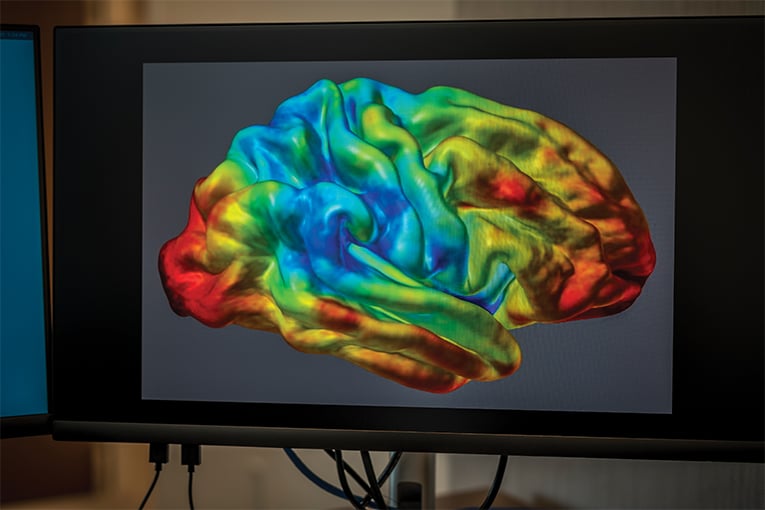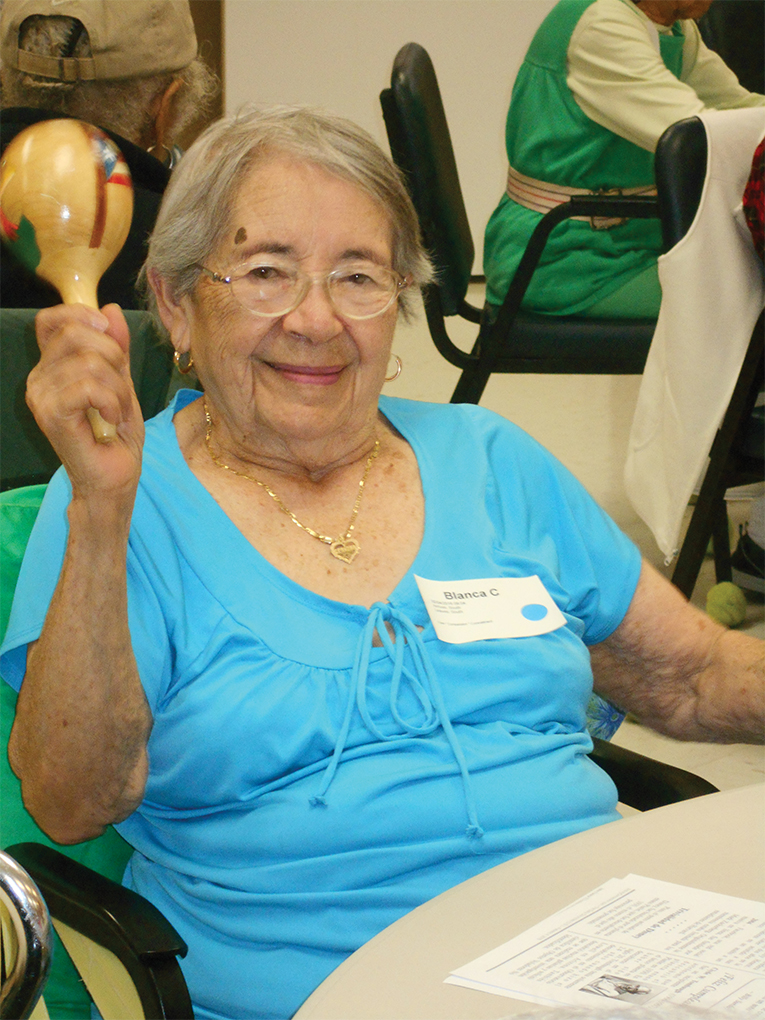Your Wellness Guide: Take Care
Take moments during each day to center yourself with meditation and mindfulness.

Find peace of mind: If you’re a beginner, start a meditation with small steps by lighting a candle and focusing on your breath. (ROBERTO GONZALEZ)
When Fern Ochakoff of Altamonte Springs first began meditating in the 1980s, she never felt totally comfortable doing it. She tried to master it, but found her thoughts would wander. Seeking guidance, Ochakoff turned to Tracy Wosaba, a certified instructor and founder of Winter Park Meditation & Mindfulness. “Tracy taught me to observe the flow of my inner thoughts and emotions without judging them as something good or bad,” says Ochakoff, who how meditates on her patio four times a week—or more if she’s feeling stressed, which isn’t often. “I enjoy the peacefulness meditation gives me,” she says.
The past year has been a challenging time for everyone—even those not directly affected by the pandemic. Chronic stress and anxiety can affect both physical and mental health, potentially leading to numerous ailments including depression, digestive problems, headaches, heart disease, high blood pressure, inability to focus, insomnia, moodiness, tense muscles and a weakened immune system.
To cope, many people have been turning to a variety of tools to boost their mental and physical well-being, including CBD products, meditation and practicing mindfulness. Unsurprisingly, meditation apps (such as Calm and Headspace) saw a spike in usage in 2020. Headspace has reported a 20 percent increase since mid-March, while Calm has seen a 50 percent increase in its daily downloads.
Finding Your Zen
“Living primarily through an outer focus has become an epidemic in society,” explains Wosaba, noting that this often contributes to inner discord. “At its core, meditation is an ancient technique that has been scientifically proven to calm the nervous system and build a better brain.”
Meditation offers many benefits including helping to improve focus, mental clarity, immunity, sleep, digestion, weight management, productivity and performance.
While many different types of meditation exist, the common denominator is having a focus, Wosaba says. “Thoughts are organically interrupted and then settle down, which allows for that mind/body/spirit connection to occur,” she explains. “There’s a change in brainwave patterns, so meditation is really a form of restful awareness.”
Julie Sachse agrees. In 2015, she launched SAX Meditation in Orlando to provide meditation training to the corporate world. “Meditation is finding a way to stop all of life’s distractions and chaos and—especially during these difficult times—the grief and anxiety that’s building within,” she says.
Sachse knows the soothing effects of meditation firsthand. When her husband unexpectedly passed away in 2017, she relied heavily on her daily meditation practice to pull her through. “As time went on, I really saw the benefits of how meditation was helping me,” she says, noting that the advantages of quieting your mind build gradually over weeks and months.
Need a little help getting started? Wosaba and Sachse share these simple, accessible meditation techniques:
- Focus on the breath. Breathe in for a count of seven and out for 11. Focus on your breath—how it feels as you inhale, how it looks as your belly expands, how it sounds as you exhale.
- Choose a mantra. Focus on a meaningful word or phrase, then silently and slowly repeat it.
- Light a candle. Using the candle flame as your anchor, simply watch the flame and train your attention on its flickering.
- Try guided meditation. Tap into the many apps available, such as Insight Timer, Calm and Headspace. The expert instructors will walk you step-by-step through various meditations.
No matter what type of meditation you do, if your mind wanders (and it will), just bring your attention back to your focal point. “Meditation is not about stopping thoughts, it’s about interrupting them and allowing the mind to settle down,” explains Wosaba.
Wosaba and Sachse offer their expert tips:
- Start small. Commit to a doable routine, say, one minute, then three, then five, extending the session length as you get more comfortable.
- Be realistic. Develop a sustainable, enjoyable routine. If you’re too rushed in the morning, try meditating during lunchtime or after dinner.
- Don’t overcomplicate it. You don’t need to create a sacred space, burn incense, or sit in a certain position—although many people enjoy prepping for a session this way. Do what works best for you, even if that’s just sitting on the couch.
- Factor in everyday activities. Tap into those routines to practice informal meditation. Walking your dog, doing the dishes or folding the laundry are perfect moments for reflection.
- Stick with your practice. Meditation works only if you do it regularly.
Focusing on the Present
Think of mindfulness as one of the tools of meditation. “It’s really a curious witnessing of what’s happening inside and around you,” explains Kristen Manieri, a certified mindfulness coach and author of an upcoming book on mindfulness habits.
Manieri suggests creating a habit of taking mindful pauses throughout your day, noticing without judgment what’s going on at that moment. Set a timer every few hours or anchor it to every time you eat. “Use those moments to take three mindful, grounding breaths for a check in,” she says. “Ask, how am I feeling and what am I thinking?
“Next, consider getting up a few minutes earlier and just sitting with yourself for 10 minutes—not necessarily to meditate, but for silence and introspection,” advises Manieri. Your mind might wander, and that’s perfectly normal. “When you falter, just speak to yourself with gentleness, kindness and compassion versus frustration or intolerance,” she says.
If you’re feeling called to meditate, journal or read something inspiring, that’s fine. But if you create a habit of centering yourself in the morning, you can set intention for the entire day.
Don’t think you need to sit still to be mindful. You can enjoy mindfulness throughout the day with, for example, mindful eating (taking note of the taste, texture and smell of the food) and mindful walking (noticing the feel of the breeze on your face).
Fern Ochakoff loves practicing mindfulness, as it’s something she shares with her horse of 17 years. “Whether I’m riding Stormy or just spending time with him, I take in the sights, the sounds, the scents, and even the touch—all of which are so easily taken for granted,” she says.
Wosaba adds: “A regular practice of meditation and mindful living is very empowering. It provides you with a road map of sorts to live in accordance with your inner, unique guidance system.” The result? Happier, healthier living.



